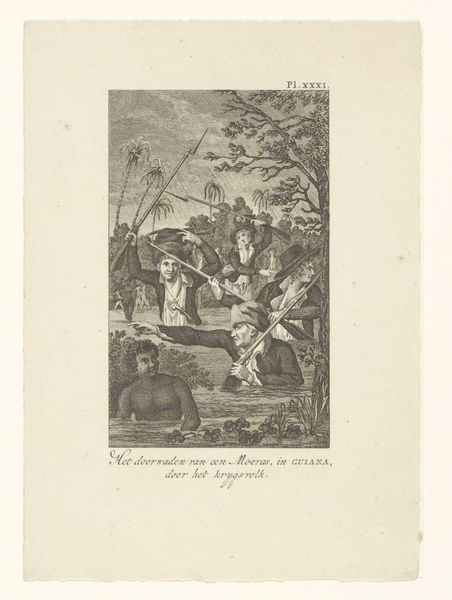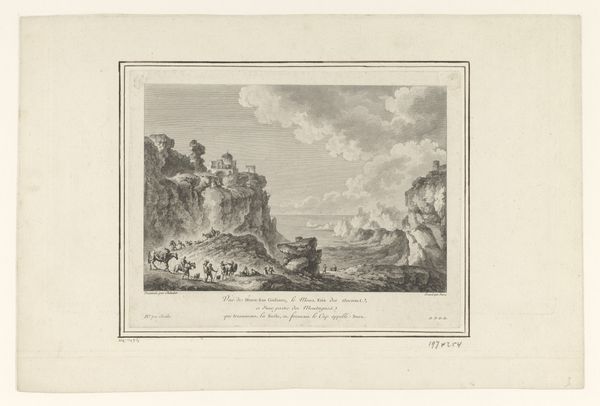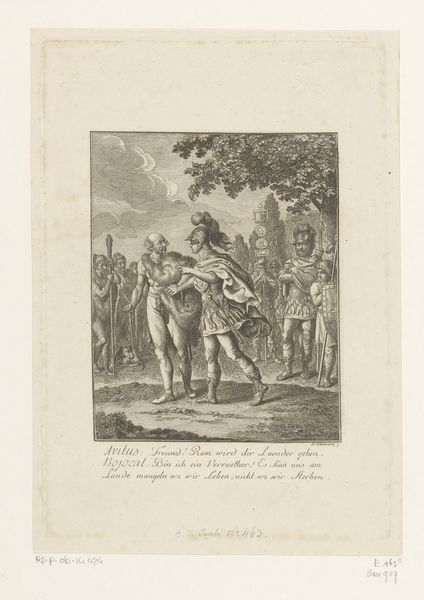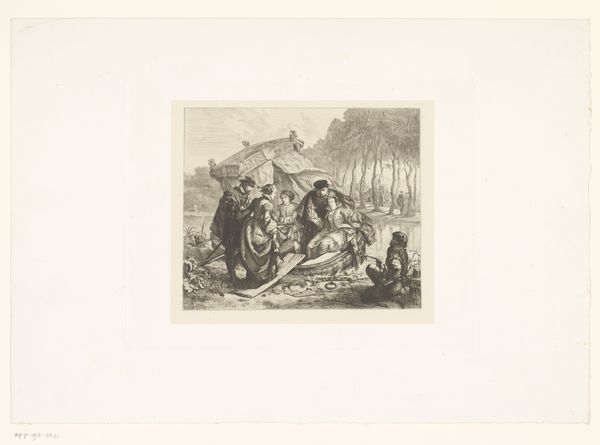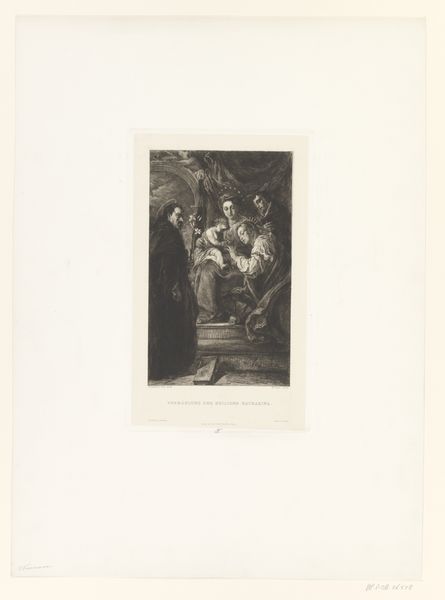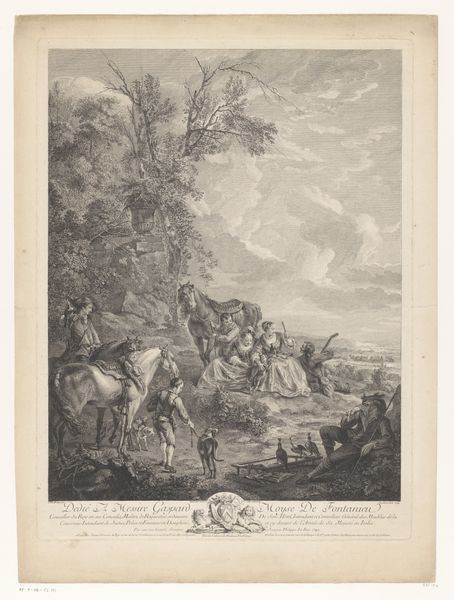
print, etching, engraving
#
narrative-art
# print
#
etching
#
old engraving style
#
classical-realism
#
figuration
#
line
#
history-painting
#
academic-art
#
engraving
Dimensions: height 189 mm, width 140 mm
Copyright: Rijks Museum: Open Domain
Editor: This engraving, "Ecce Homo" by Eugène Gaujean, likely made between 1860 and 1900, depicts a scene of intense drama. The crowd, the architecture, even the sky, feel fraught with tension. What do you see as its role or statement within the visual culture of its time? Curator: Well, considering the social history, images like these played a complex role. "Ecce Homo," meaning "Behold the Man," portrays Christ presented to the crowd before his crucifixion. In 19th-century Europe, with its religious and political upheavals, this image becomes loaded. Was Gaujean commenting on authority, power, and public perception, especially through the dramatic gestures and architecture, alluding to state power? Editor: That's fascinating. The theatrical composition makes me think of public spectacle. How did that affect the viewers? Curator: Exactly! It draws upon a tradition of history painting aiming to evoke strong emotional responses. These artworks played a crucial role in shaping public sentiment. Consider, how was religious imagery used to reinforce or even challenge existing social structures at that time? Were such works intended to reinforce established authority or elicit empathy for the suffering? Editor: So, even a religious scene could become a commentary on contemporary society. Curator: Precisely. The art world of the 19th century was shaped by powerful institutions that either affirmed or challenged political narratives. These were turbulent times, so I ask you, whose narrative is this image truly reflecting, and why? Editor: It's amazing to consider all these layers beneath what seems at first a straightforward religious image. I'll never see it the same way. Curator: Indeed. Examining the historical context unveils how art can be entangled in political and social debates, reflecting its cultural environment.
Comments
No comments
Be the first to comment and join the conversation on the ultimate creative platform.
